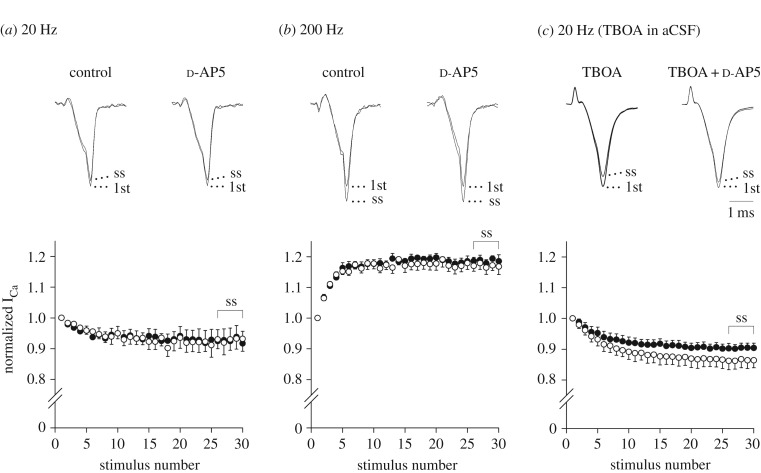Figure 5.
Involvement of endogenous NMDA receptor ligand(s) in activity-dependent decline of ICa. ICa were elicited by a train of 30 square depolarizing pulses (to 0 mV, duration: 1 ms). Sample records show the first (1st) and 26th–30th averaged ICa (ss, superimposed), which are normalized to the first ICa, in the absence (left traces) or presence (right traces) of d-AP5 (500 µM). Data points and bars represent mean ± s.e.m. of the normalized ICa amplitude in the presence (filled circles) or absence (open circles) of d-AP5 in the aCSF. (a) Activity-dependent decline of ICa amplitude by 20 Hz stimuli. No significant difference. (b) Activity-dependent facilitation of ICa amplitude by 200 Hz stimuli. No significant difference. (c) Activity-dependent decline of ICa amplitude by 20 Hz stimuli in the presence of the glutamate transporter inhibitor TBOA (100 µM). In the presence of d-AP5, ICa decline became significantly less (p < 0.05, Student's paired t-test). A horizontal scale bar in the superimposed sample traces indicates 1 ms.

